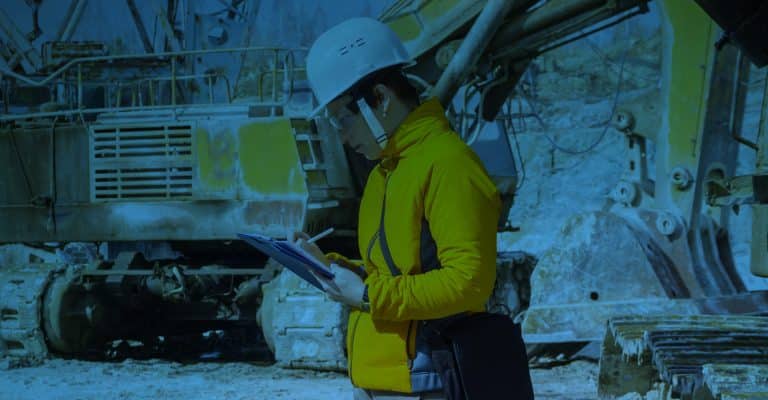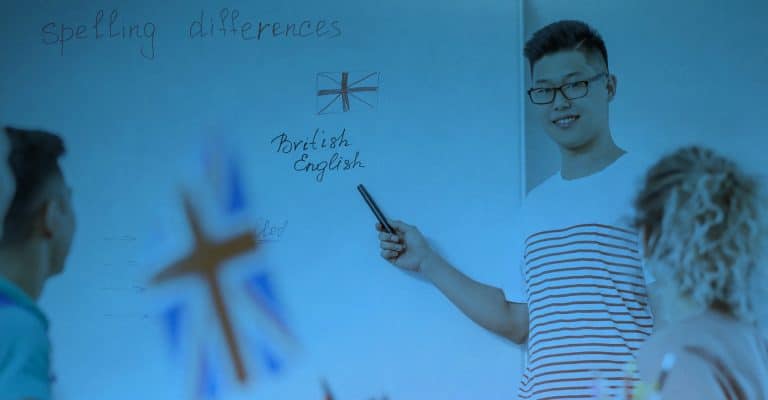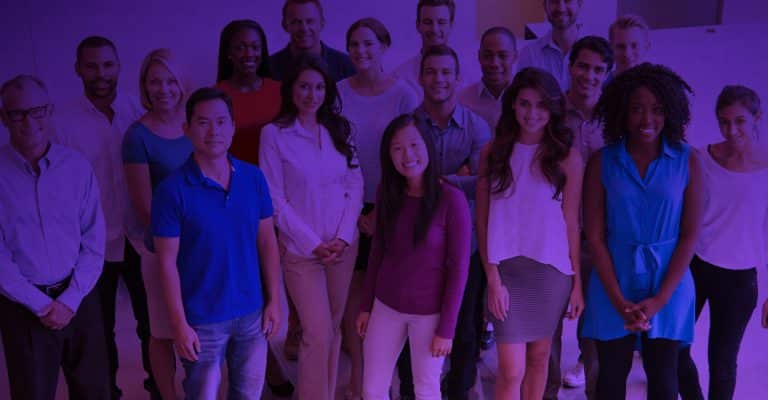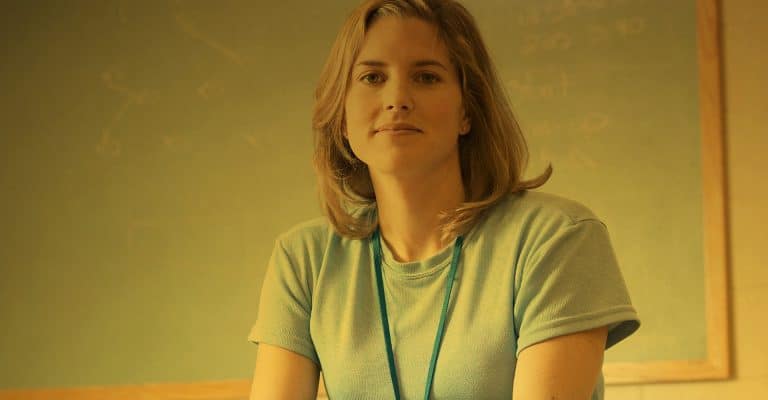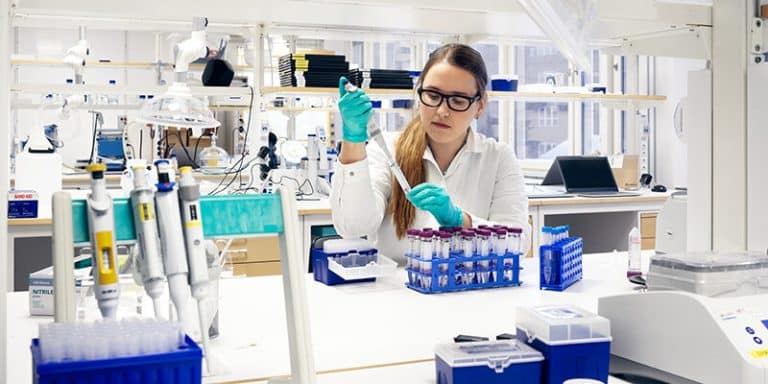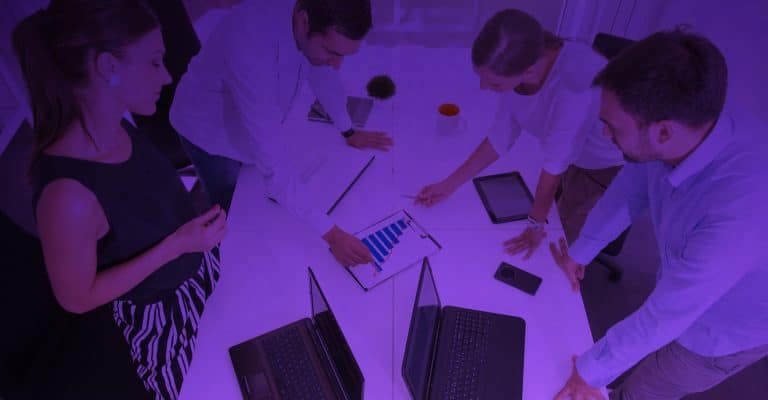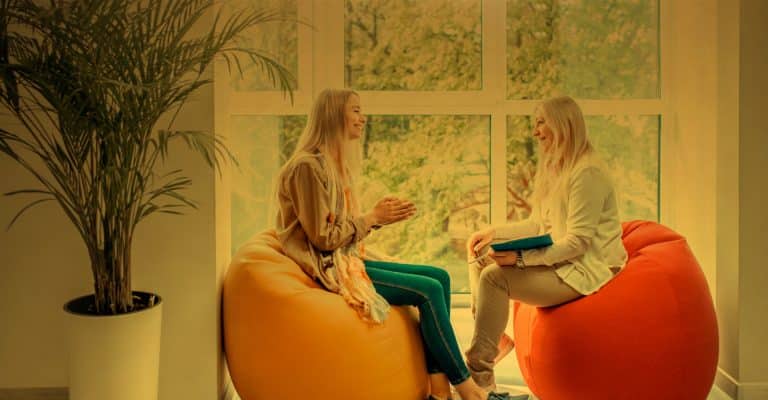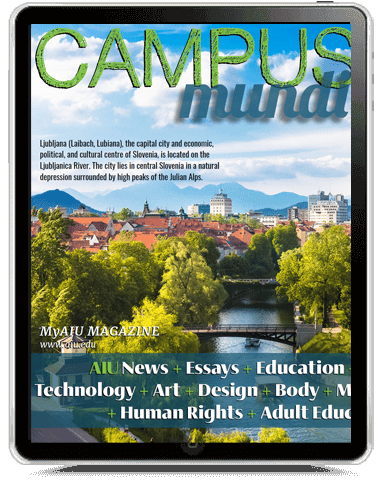

March 2022 Edition!
AIU News + Essays + Education + Culture + Science + Technology + Art + Design + Body + Mind + Environment + Human Rights + Animal Rights + Project Management + About AIU
Thesis defence
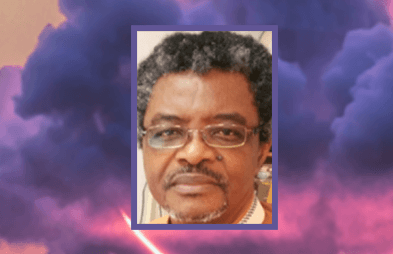
JANUARY 21, 2022. Atlantic International University is delighted to share the Thesis Defense of one of our students, Mboule Andre, from Cameroon, which was graded with an A. The thesis was titled, “Conceptualizing the project-based approach as a model to apply in entrepreneurial initiatives and business development. Application to the “Fountain of Living Water” Foundation in the Christian ministry.” Abstract: One of the reasons that press young people in entrepreneurship might be “to see their ideas realized.” This research topic, the “projectbased approach” (PBAp), aims at providing an entrepreneur with the skills, competences, and processes for a full control of the product or service. This qualitative study used the Delphi method – with a panel of 12 experts – as the research design. It characterized the PBAp with superordinate or “stem” concepts, basic concepts, and specific concepts. The designed PBAp model consists of basic pillars such as People, Processes, and Technologies. The application of the PBAp model in the FOLW… Mboule Andre completed a Doctorate Program in Project Management at Atlantic International University.
Thesis defence
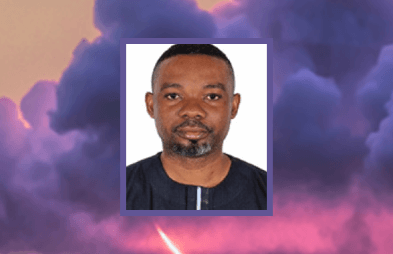
ANUARY 21, 2022. Atlantic International University is delighted to share the Thesis Defense of one of our students, Uzochukwu Nnenyelike, from Cameroon, which was graded with an A. The thesis was titled, “Micro-Financing as a Tool for Poverty Eradication and Economic Growth in Nigeria.” Abstract: The study examined micro-financing as a tool for poverty eradication in the Nigerian economy. The study seeks to explore the most beneficial services of microfinance to the low-income group in Nigeria. Also, the study investigates the contribution of microfinance institutions to business startups among the low-income group and examines the impact of microfinance institutions on poverty reduction and economic growth. Mixed design techniques were employed. Secondary data were collected from the Central Bank of Nigeria Bulletin 2019 where primary data were derived from the administration of questionnaires to seventyseven low-income groups in Lagos. Nigeria. IBM-SPSS version 22.0 and E-VIEW 9.0 were used in data analysis. Findings revealed that most of the participants expressed that microfinance provides loans to the low-income group to support existing business operations as well as household support in terms of payment of school fees and other household chores. Also, Findings from the secondary data analysis show that microfinance bank credit, microfinance bank deposit, and microfinance investment contribute positively and significantly to the gross domestic product during the period under investigation. … Uzochukwu Nnenyelike completed a Doctorate Program in Business Administration at Atlantic International University.
17 TH INTERNATIONAL CONFERENCE ON Interdisciplinary Social Sciences

Call for Papers This Conference will be held 21–23 July 2023 at National and Kapodistrian University of Athens – School of Philosophy, Athens, Greece. We invite proposals for paper presentations, workshops/ interactive sessions, posters/ exhibits, colloquia, focused discussions, innovation showcases, virtual posters, or virtual lightning talks. 2023 Special Focus: “At the Crossroads of Paradigms: Considering Heterodoxy in the Social Sciences” Theme 1: Social and Community Studies. Theme 2: Civic and Political Studies. Theme 3: Cultural Studies. Theme 4: Global Studies. Theme 5: Environmental Studies. Theme 6: Organizational Studies. Theme 7: Educational Studies. Theme 8: Communication. Become a Presenter: 1. Submit a proposal 2. Review timeline 3. Register Regular proposal deadline April 21, 2022 Regular registration deadline June 21, 2022 Visit the website: https://thesocialsciences.com
Graduated with Distinction
DISTINCTION
Steven Michael Bahler
Doctor of Philosophy
Educational Administration and Leadership
DISTINCTION
Freda Isioma Nwaulune
Master of Science
Psychology
Become an Alumni today Becoming an AIU Alumni opens you to abundance and prosperity. Also exemplifies that you have reached your maximum potential, do not delay. You might qualify to graduate this month with our QALP program, taking into account publications, seminars, work projects, etc. Please click below to see if you qualify: I want to graduate now! https://aiu.typeform.com/to/p3rnGp6B Make this month the month you graduate with AIU. If you have any questions please let your tutor know through your student page.
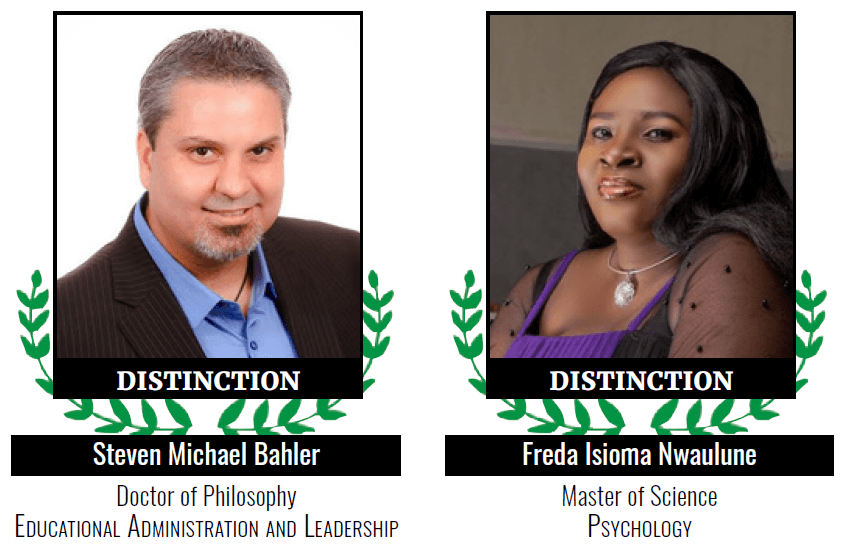
FEBRUARY 8, 2022. Atlantic International University is delighted to share the Thesis Defense of one of our students, Nathaniel Ebo Nsarko, which was graded with an A. The thesis was titled, “The art of leveraging ICT to bridge the communication gap between agricultural research, academia, and small-scale farmers in Ghana”. Abstract: The use of Information Communication Technology (ICT) is revolutionizing the agriculture sector, and the benefit it brings is enormous. This study explores ICT innovations and solutions in agriculture, by using it as a communication tool through the TeleAgric Programme towards its development in Ghana. Focus is placed on enhancing information … Nathaniel Ebo Nsarko successfully completed a Doctorate Program in Development Communication at Atlantic International University.
12 TH DISCIPLINARY CONFERENCE ON Aging & Social Change
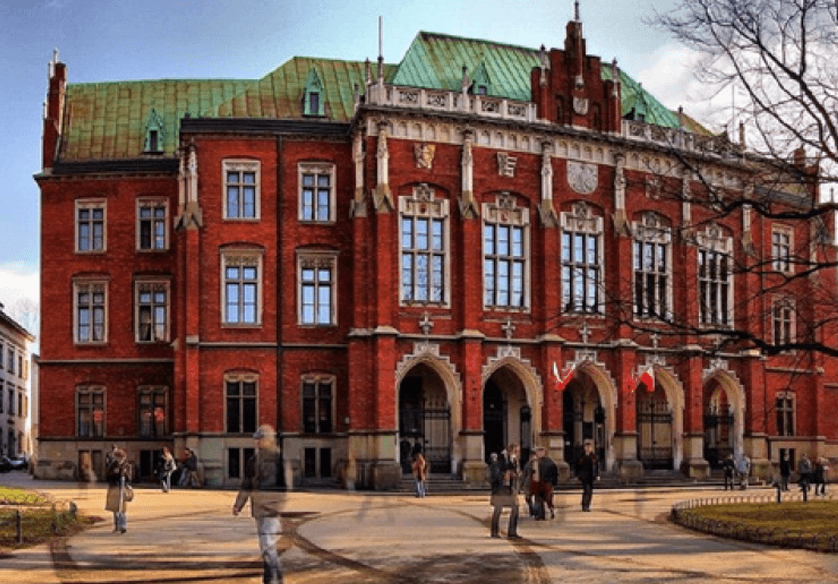

Doctor of Philosop hy
Computer Science
Canada
Amilcar Demetrio Carrasco Rodriguez
Master of Information Technology
Cybersecurity
Dominican Republic
Wilfredo Castaneda Salinas
Doctor of Education
Education
El Salvador
Laurence Norman Neufville
Doctor of Science
Geoinformation Technology
Jamaica
George Stivie Kenneth Willow
Doctor of Business Administration
Business Administration
Malawi
John-George Okwudiafor
Master of Economics
Transport Economics
Nigeria
Seramuka Ildephonse
Doctor of Healthcare Administration
Healthcare Administration
Rwanda
Mélida R. Chavarría R.
Bachelor of Science
Psychological Counseling
Switzerland
Byaruhanga Stephen Rwaheru
Doctor of Science
Sustainable Energy Engineering
Uganda
Victor Oluwole Omosule
Doctor of Business Administration
Healthcare Management
US A
Sonal Vishal Pawar
Doctor of Philosop hy
Business Management
Canada
Carlos Alberto Adams Marcial
Bachelor of Business Administration
Business Administration
Dominican Republic
Nathaniel Ebo Nsarko
Doctor of Develop ment Communication
Development Communication
Ghana
Ricardo Alexander Baccas
Doctor of Philosop hy
Mathematics
Jamaica
Oscar Anguiano Castro
Doctor of Science
Architecture
Mexico
Marwan Haruna Abdulkarim
Doctor of Philosop hy
Environmental Sustainability
Nigeria
Ibrahim Abdulai Sawaneh
Doctor of Science
Computer Science
Sierra Leone
Afadhali Taibu Afadhali
Master of Finance
Finance
Tanzania
Bladimir Alcivar Reinoso Chipantiza
Doctor of Arts
Human Rights
USA
Kimberly Esthela Wood Salazar
Bachelor of Science
Psychology
USA
Segundo Juan Zamudio Benavides
Bachelor of Science
Civil Engineering
Colombia
Joel Antonio Quintana Abreu
Bachelor of Accounting
Accounting
Dominican Republic
Silvia Frinee Lima Gudiel
Bachelor of Science
Psychology
Guatemala
David Gachunga Mwangi
Bachelor of Management
Procurement & Logistic Supply Chain Mgmt
Kenya
Abdulrazak Adeshola Yusuf
Doctor of Philosop hy
Accounting
Nigeria
David Bermudez Rosado
Doctor of Business Administration
Business Administration
Puerto Rico
María José Fernández Bruno
Bachelor of Psychology
Psychology
Spain
Fatih Şahin
Bachelor of Science
Mechanical Engineering
Türkiye
Stéphania Noël
Master of Social Work
Social Work
USA
Doctor of Education
Education
Dominican Republic
Enoch Relwende
Bachelor of Arts
Arts
Ghana
Vinnett Malcolm
Doctor of Business Management
Business Management
Jamaica
Gerard Atabong Fossung
Doctor of Philosop hy
Computer Engineering
Netherlands
Marcos Tulio Londoño Alvarez
Doctor of Private Legal Studies
Civil Legal Studies
Panama
Sarah Lindy Maluleke
Doctor of Business Administration
Business Administration
South Africa
Sevda Yapici
Bachelor of Arts
Business Administration
Türkiye
Fongyi Lordson Muno
Bachelor of Science
Computer Engineering
USA
Stephany Garcia Montoya
Bachelor of Science
Nutrition
Colombia
Edwin de Jesús Joaquín Núñez
Bachelor of Marketing
Inbo und and Outbo und Marketing
Dominican Republic
Michael Asamoah Arthur
Certificate of Science
Mechanical Engineering
Ghana
Brigitte Katshiete Mbuisi Eale
Doctor of Science
Maternal and Child Health
Kenya
Adenuga Adeleke Francis
Doctor of Education
Education
Nigeria
Necitas C. Lojo
Doctor of Science
Nutrition
Philipp ines
Bin Wang
Bachelor of Education
Education
South Korea
Cemile Aslı Üstünkaya
Doctor of Business Administration
Business Administration
Türkiye
Tanechia Anderson
Bachelor of Management
Management
USA
Find More Graduates

Testimonials
FIND MORE TESTIMONIALS FROM A I U STUDENTS HERE: https://wp24.aiu.edu/Testimonials.aspx
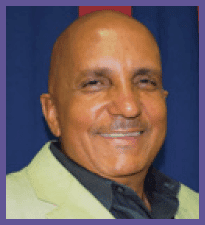
Ivan Craig
Master of Agricultural Science
November 19, 2021
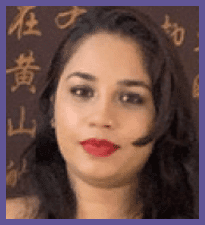
Cynthia Sukhai
Master of Forensic Psychology
December 3, 2021
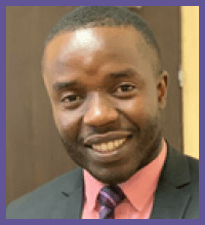
Christian Nnatuanya
Doctor of Information Technology
December 10, 2021
Understanding theories and beliefs on Animal’s Behavior

Ethology & Neuroscience Ethology is the term used to study animal behavior. This means that the person who studies ethology is known as an; ethologist. Scientists who study the behavior of animals and work with animals know when they are in a certain mood. This knowledge will help scientists who breed animals to know when it is their mating season based on signs and symptoms displayed by the animal. Ethologist do believe that the secrets to how an animal behave is dependent upon the animal’s gene (Grandin & Deesing, 2013). Then and there, ethologist have a different point of view of belief than the founder of “Behaviorism”, J.B. Watson (1930). Ethologists believe that firstly, identifying the genotype and phenotype of animals which lead them to observe their genes to discover and figure out why animals behave a particular way. Neuroscience helps to defend or co-relates with Darwin’s point of view as it relates to his theory or belief on emotions in animals. From this, scientist looked at brain systems that control emotions. The four main emotional systems located in the subcortical areas of the brain are; FEAR, RAGE, PANIC and SEEKING (Grandin & Deesing, 2013). Scientists discovered that these emotional systems in the brain show or explain animals behavior or those that looked deeply into things and realized the differences between an animal’s and a human’s brain. This is how the sub-topic “Neuroscience”, comes about and how it’s relates to the information discussed.
Young animals raised in separate environments can have an effect on the development of their nervous system of the animals. For example; wild animals are mostly reared in wild areas or woodlands, deserts etc. These animals are mostly prone to being wild or more active than animals raised in a zoo (enclose area), house (pets) etc. Animals reared in a household, their behaviors are generally different than those raised in the field where all other animals are and entangles with multiple different animal, observing and attracting their behaviors. An Animal’s behavior is dependent upon a lot of factors, it can also be the case where they live in the field or woodland amongst many different or same species. These animals tend to behave wilder, aggressive, etc. This is why the scientist discovers that the environment can play a major factor on the development of an animal’s nervous system. Animal’s behavior can be due to a whole lot of factors. Animals do produce hormones that are somewhat similar to those produces or secretes in a human’s body especially for mammalians. The adrenal glands do have an effect on an animal’s behavior. Why? The adrenal gland secretes hormones; adrenaline and noradrenaline. In human biology and physiology, (It is expressed/outlined/stated that) the inner and outer portion of the adrenal glands are responsible for the secretion of these hormones. The inner portion of the animals’ adrenal gland will secrete the adrenaline. This hormone is usually released when the animal is under attack (FEAR / PANIC), and this goes right back to the emotional system of the animal which is reflected based on their response in behavior. If an animal is being attacked by a predator, this means that the animal will become FEARFUL of the other and tries to get out of its reach, to be able to survive. These signs can be detected based on the animal facial expressions sometimes, they might run, they might portray some escape behavior. Wilder species would protract stronger fearful response compared to domestic animals such as; cattle and sheep (Grandin & Deesing, 2013). If an animal is undergoing their mating season for example; swine (pig) they display behavioral signs such as; restlessness, standing heat etc. These are responses or signs given off to animal breeders or artificial inseminators would look out for in an animal behavior to know when it’s their mating season. This is how animal reproduction comes in place. Ethologist also looked into several means to know reason why animals behave a particular way.
Difference between innate and learned behaviors Animal’s behavior can also be summarized into two terms; “innate” and “learned” behavior. In a regular situation, if you place your index finger in a baby’s hand middle or foot bottom, they will automatically grab unto your finger (Bozeman Science, 2012). Babies aren’t born with any knowledge of anything, but with this behavior or reaction babies give when place your finger there, it shows that babies are born with this instinct of theirs. This way of action is called innate. There are some animals that naturally born portraying a particular activity which isn’t something they learn but they just naturally do it. This is what innate behaviors are all about animals displaying a certain behavior that they are born doing without learning it from any other organism.
Learned behavior is much more detailed then innate behavior. Learned behavior is self-explanatory, meaning, these animals would learn these types of behaviors that they portray. Ethologist studies the different behaviors animals display by observing them, and placing them around certain animals or even humans and carrying out researches and experiments to see and know how animals react differently to stimuli. Learned behaviors are as follows; imprinting, associative learning, trial & error, observational learning and insight (Bozeman Science, 2012). Imprinting is a type of learned behavior where the baby/offspring of animals watch and observe their mother’s behavior. For example; a duckling can imprint on humans when they are very young. If you take away the mother the ducklings and replace with a human (woman or man), they will imprint on the human, thinking it’s their mother. Ducklings often imprint on humans and this is how we discuss the process of the animals learning this particular behavior by imprinting on humans. (Bozeman Science, 2012) Associative learning is a process through which animals go through to learn and react to a particular stimuli based on what is being taught. Ethologist studies many different ways to see how animals will behave or react to a particular stimulus, however the theory on “Pavlov’s dog”, where he rings a bell and each time in ringing the bell he observes and watched the reaction of the dog by observing his salivary discharge. Dogs are very smart and observant animals in the animal kingdom, they are so smart that they can sense and identify their food with ease. Sometimes when the bell is rung and there was no food, the saliva of the dog would not be so much, if you show them food alone their saliva might not be enough either. If you ring the bell and show the food at the same time, their saliva will be longer or increase than the first two trials. This is showing that the animal is reacted to this stimulus the best, he reacts faster when the bell was rung along with the presence of food. (Bozeman Science, 2012)
Trail & Error Learning is a method of observing animal’s behavior by carrying out experiments to test their reaction and see how they will behave as well as to teach them. This type of behavior learnt by animals is associated with the B.F. Skinner experiment with his skinner box in which he used to teach the rat a lesson and know when to and when not to go for the food and know the difference between the two lights. This is how this learning technique can be applied to B.F. Skinner experiment by teaching the animal and allowing them to learn and see how they will react based on applying rewards such as food and a shock to let them know not to go when it’s a red light.
(Bozeman Science, 2012) Observational learning is basically when animal’s watch and observe each other as well as watching and observing humans and is following what they do. For example, based on scientific research, it was said that monkeys are almost or close to being humans. Why do you think that conclusion was made? Monkeys are smart and very observant. They will watch you and mimic or follow your every move and action. That’s how they learn easily and adopt to their very own environments. This brings us back to realizing that animals learn based on the environment s they are living in. If a monkey is placed in a home with only humans, he will follow their every movement and attempt to behave like humans e.g. monkeys can stick out their tongue if they catch you doing it to them. If you place them in the jungle or zoo they will behave like their family. At the zoo, monkeys sometime behave like humans because they are seeing visitors (people) and they copy the humans’ behavior towards them. That’s how they learn and portray that behavior as well. Animals can observe their surroundings and learn based on the actions displayed. If someone places a finger on the top of their forehead, the chimpanzee will follow and copy the action; placing its finger to its forehead just the same. Motor neuron and mirror neuron are what helps with their learning and observation to follow what they saw. This is how they observe what you are doing and learn from your actions.
(Bozeman Science, 2012) Insight, this is where animal’s such as chimpanzees are given something to try and solve a particular puzzle or challenge. For example; placing a chimpanzee in a room that has boxes or crates and the objective is for the animal to reach a bunch of bananas hanging from the ceiling. In order for the chimpanzee to reach the bananas, it has to place boxes or crates on top of each other to reach them. It must be taken into account their brain isn’t fully developed or as developed as humans to know what do at the same time, hence they will try and try until they finally solve the problem by placing the boxes on top of each other to complete its goal. This is called insight, they might not born or have the essential knowledge needed to complete or solve problems but they try and try until they finally figure out what is required to get something done. This is how animals learn and this is how ethologist discover what they are capable of and how to work with them and improve on their learning abilities. (Bozeman Science, 2012)
Conclusion There is a very complex interaction or relation with observing animal’s based on genetic features as well as environmental factors which determines an animal’s behavior. An animal’s temperament can be influenced or affected (positively) by both an animal’s genetics (genotype and phenotype) as well as learning. Animal’s behaviors can be detected through; genetics’ according to scientist and physiologist that studies behaviorism and how genetics can affect animal’s behaviors, the study of ethology can show and explain how animal’s behavior based. They will be teaching the animals or showing the animal’s a particular item, which leads back to learned behavior which is a part of the study of animal’s behavior. Animals can learn how to behave by: learning whether they will watch and observe another organism, habituate just by them seeing or viewing the same stimuli over and over, learning through trial and error which is associated with what B.F. Skinner theory is about. Animals can learn a variety of ways and their behaviors can be detected by carrying out test and experiments. “Animals are interesting living organisms which play important roles in biodiversity, it is important that their behaviors are understood”. The End
REFERENCES. Bozeman Science. (2012, April 26). Animal Behavior {Paul Andersen steps you through eight types of animal behavior. He starts by defining ethology and explaining that behavior varies from innate to learned. He discusses each of the following with examples; instinct, fixed action pattern, imprinting, associative learning, trial and error learning, habituation, observational learning and insight.}.Retrieved from Youtube: https://www.youtube.com/watch?v=6hREwakXmAo&t=1s • Gillian P. McHugo, Michael J. Dover & David E. MacHugh. (2019, December 02). Unlocking the origins and biology of domestic animals using ancient DNA and paleogenomics. Retrieved from BMC Biology: https://bmcbiol.biomedcentral.com/articles/ 10.1186/s12915-019-0724-7 • Grandin & Deesing. (2013). Behavorism. In G. &. Deesing, Genetics and the Behavior of Domestic Animals (pp. 10-462). Colardo : Academic Press. • Grandin & Deesing. (2013). Ethology. In M. J. Temple Grandin, Genetics and the Behavior of Domestic Animals (p. 12 of 462). Colorado, USA: 2nd edition. Amsterdam : Academic Press. • Temple Grandin & Mark J. Deesing. (2013). Basic Genetics More Complex Than Other Traits. In T. G. Deesing, Genetics And The Behavior of Domestic Animals (pp. 9-426). Colorado: Academic Press.
The AIU extraordinary curriculum design

We are observing the world in which we live, we analyze our lives and we come to the conclusion that we have to do something: that something is to see where the truth is to work with it and that can only be achieved with science. We look here and there and everything seems to be chaos; human beings with so much technology and also with science, which seeks something other than good, it seems that we can’t find a solution at the moment we are living. We see that every day things seem to be more complex. We already know that according to some scientists like Ilya Prigogine (Moscow 1917- Brussels, Belgium 2003) from chaos comes order. Prigogine is the Father of Chaos Theory. According to Prigogine, human actions have many directions and don’t go in the same proportion on the arrow of time backwards or forwards. Human actions have many variables, and their consequences can’t be determined as Classical Mechanics does. The accumulation of disorder determines a new order according to Prigogine.
It seems that we are in the process of structuring a new order, only from what can be seen we are looking for it in the deterministic sciences. We continue with our desire to find stability, well-being in our lives and the conclusion we reach is that we have to study to find solutions to the society in which we live in which a pandemic has revealed what we as human beings have done: create all a chaos. To study we search here and we search there in which university to do it. We see Atlantic International University (AIU) and we are struck by the fact that they have an Open Curriculum. We are going to see what a Curriculum is because whenever we hear or see the word written we think about the life story and work experience to apply for a job. A Curriculum, in this case, a Curriculum Design refers to the way in which the teaching-learning of a school institution is organized. Reviewing the literature on the subject we have to go first to the classics. José Gimeno Sacristán says: “…the Curriculum is a nuclear reference element to analyze what the school is in fact as a cultural institution and when designing an alternative institution project”. (Gimeno Sacristan, 2013, p. 19). https://profejhonny. weebly.com/uploads/2/2/8/1/22818782/el_ curr%C3%ADculum_una_reflexi%C3%B3n_ sobre_la_pr%C3%A1ctica_libro.pdf According to what should be the Curriculum Gimeno Sacristán says: “In an advanced society, knowledge has a relevant and progressively more decisive role.” (Gimeno Sacristan, 2013, p. 21) According to José Antonio Arnaz, the Curriculum is: “…a plan that rules and explicitly guides a concrete and determined teaching-learning process that takes place in an educational institution.” (Arnaz, 2016, p. 9)
In current works, from 2021, such as that of Joaquín Moreno Flores; “Curricular Design as a bridge between university and society”, he says: “…should the curriculum be designed in permanent concert with socio-economic needs? or on the contrary. Should it conform to the challenges that society poses?” (Moreno Flores, 2021, p. 3) In the Curriculum Design that AIU asks you to complete by making your Study Plan with your Descriptive Letters or courses, you have the freedom to generate your best skills for the future you want. Let’s go to see the parts of a Curriculum Design so you can see what AIU gives you and what you have to do because there are students who think that they determine everything. Also your document that you will do will be evaluated. A Curriculum Design is made up of the following: a) Curriculum Objectives. They are the educational purposes of the Institution b) Curriculum. Content set. c) Descriptive Letters. The course guides d) Evaluation System. It includes the admission, evaluation and promotion system. All that is a Curriculum in AIU you have the Objectives: a Philosophy and a Policy. The Philosophy is manifested in: you are unique and unrepeatable. The Policy: the student will always be listened to. From the above you can infer that what is asked of you when AIU tells you: you have an open Curriculum Design, is that you can write your descriptive letters to build your study plan or program. You can freely do what you want your content set to be. Taking into consideration that according to Mario Bunge: science is the best style of thought and what Gimeno Sacristán says that knowledge has a relevant role: we have to seriously consider what science is useful for. You have at AIU the opportunity to build the part of your Curriculum that corresponds to your Program or Study Plan: your curriculum design or syllabus with the topics that you consider to have a way to grow as a human being and to have a job anywhere in the world. AIU ask you that each one of the works presented ends with an application for your community and for the solution of an international problem.
This requirement makes you investigate and learn to know the way the world is and to be able to acquire skills to enter the company that you propose or be an entrepreneur. You may think: I know little. How am I going to do it? You are going to do it looking for information in the electronic media that we have nowadays. I remind you Prigogine in his Chaos Theory. It means what AIU also asks of you: don’t stay in the quantity. Your work must reach the holistic model. What do you resolve for human life? Nowadays we are in the way we see: in chaos because we want to do everything quantitatively and human actions have many variables: These human beings just want money. Those human beings don’t want to grow up doing something: working. Other human beings don’t want to be vaccinated but when they were children they gave them a series of vaccines.
These other human beings don’t think about the poor people they generate. Those other human beings give them the same not to study. Those rulers want to be rich until their nth generation. The chaos in which we are as a consequence of not finding solutions as a society to the Covid-19 pandemic and all its mutations, will continue until the prevailing disorder seeks its bifurcation to generate the balance of the crazy system in which we live nowadays. We have to work, all of us, as a society, towards solutions that allow human life and that will be by doing science that has human life as an end. Not with this global warming, not with each group of human being pulling for their convenience instead of the convenience of all. You have to make a curriculum design or syllabus
for everyone’s life. BIBLIOGRAPHY. Arnaz, J. 2016. La Planeación Curricular. México: Trillas. • Gimeno Sacristán, J. 2013. El curriculum: una reflexión sobre la práctica. Madrid: Morata • Moreno Flores, J. 2021. El diseño curricular como puente entre universidad y sociedad. Madrid: Paraninfo. • Pansza, M. 2005. Pedagogía y Currículo. México: Gernika.
Learning
Respectful parenting
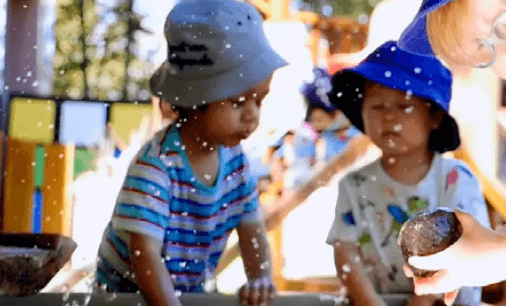
Resources for Infant Educarers (RIE) was founded by Magda Gerber in 1978. … The basis RIE philosophy is respect for, and trust in the baby to be an initiator, an explorer, and a self-learner. 1. Encourage independent play from birth. There are many studies about the importance of boredom for children and how it allows them to develop imaginative play and creativity. 2. Acknowledge and accept children’s emotions. Don’t teach them to bottle their emotions saying everything’s OK. “I know you wanted that treat and now you’re upset because I won’t let you have one. I’m here if you need a hug.” 3. Communicate authentically. Using correct language can help babies develop their language skills. 4. Model the behaviour you want to see in your children. Be an example. 5. Don’t put labels on your children. They will have a negative outlook on themselves and they will find it harder to correct their behaviour. 6. Allow children to independently problem-solve. Children need to get stuck and they need to figure out how to solve problems on their own. 7. Allow children to participate in household duties. This allows children to feel like they are contributing members of the home. 8. Ask children to participate in their own caregiving. For example, asking permission before changing a diaper or giving them time to brush their own teeth before stepping in to finish the job … Read full text:
Self-sufficiency?
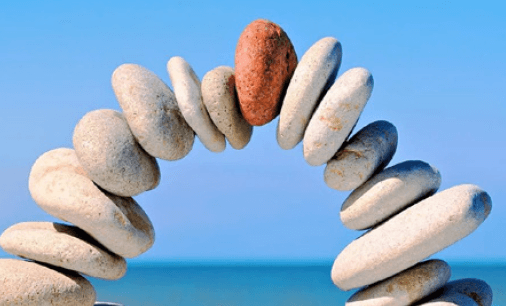
For countless Americans, there was a dull but persistent pain to prepandemic life: high-priced housing, nearly inaccessible health care, underresourced schools, wage stagnation and systemic inequality. It was a familiar ache, a kind of chronic hurt that people learned to live with simply because they had no other choice. Faced with threadbare safety nets and a cultural ethos championing nationalist myths of self-sufficiency, many people did what humans have always done in times of need: they sought emotional comfort and material aid from their family and friends. But when COVID-19 hit, relying on our immediate networks was not sufficient. Americans are gaslit into thinking that they are immeasurably strong, impervious to the challenges people in other countries face. In reality, our social and economic support systems are weak, and many people are made vulnerable by nearly any change in their capacity to earn a living. … Anthropologists have long recognized that exceptionally high degrees of sociality, cooperation and communal care are hallmarks of humankind, traits that separate us from our closest living relatives, the chimpanzees and bonobos. This interdependence has been key to our success as a species. Viewed this way, we humans have an evolutionary mandate to be generous and take care of one another. … Read full text:
AIU makes a huge contribution to the world by giving new scient ifics the space for original investigations and research. Visit MyAIU Evolution
Brain organoids
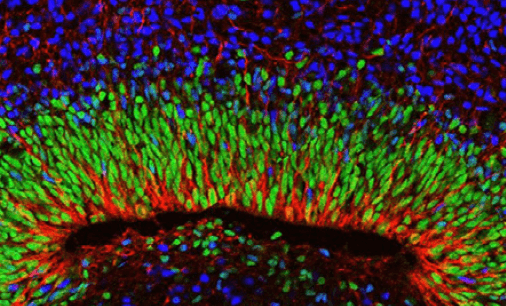
Hundreds of genes have been linked to autism spectrum disorder (ASD), a complicated range of conditions affecting the behavior, social development, and communication of tens of millions people worldwide. But teasing out exactly what effect those genes have and how they relate to ASD has been devilishly difficult. “Nobody can study an actual human brain as it develops,” says Paola Arlotta, a professor of stem cell and regenerative biology at Harvard University. But a new approach is now yielding promising results. Arlotta and her colleagues at Harvard and the Broad Institute of Harvard and MIT have been working with organoids —three-dimensional clumps of brain tissue grown from stem cells— usually just a few millimeters across. When organoids grow, they start to develop different types of brain cells, and begin to organize into primitive networks that mimic some of the architecture of the human brain. Organoids grown from stem cells donated by people with ASD have been used to study the condition in the past. But Arlotta and her team, as they describe in a paper published recently in the journal Nature, created genetically modified organoids of the human cerebral cortex, each with a mutation in one of three genes thought to be linked to autism. … Arlotta and her colleagues noticed the timing of cell development in the modified organoids seemed to be off compared to those with the “normal” version of the gene. …
Read full text:
Wild animals prized as delicacies
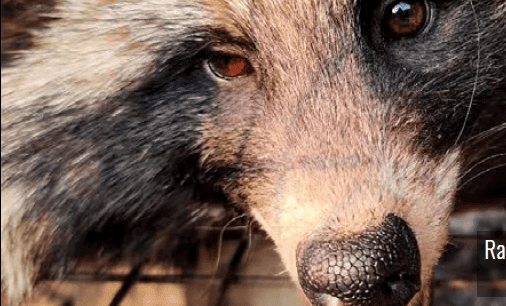
Wild animals sometimes found on the menu in Asian countries harbor a bewildering panoply of viruses, a new study has found —including many that can infect humans. Although none is closely related to the coronavirus that touched off the COVID-19 pandemic, the study sends a clear warning that other viral threats are lurking in the animal kingdom, scientists say. Live-animal markets are known to have sparked outbreaks, such as severe acute respiratory syndrome (SARS) 2 decades ago. But the study underscores the extent of the threat, showing “there is an enormous amount of unsampled viral diversity” in the animals, says Harvard University evolutionary biologist William Hanage, who was not involved in the work. “We humans need to understand that for a virus, different mammal species can look pretty alike, provided their cells have appropriate receptors.” China has clamped down on the sale of the animals sampled in the study, but other countries in the region have not. The researchers, led by veterinarian Su Shuo of Nanjing Agricultural University, took samples from nearly 2000 animals in China including fur farms, zoos, and natural habitats. Most were species that are traditionally eaten as delicacies in China, including civets, raccoon dogs, badgers, bamboo rats, and porcupines. Using a “metagenomics” … Read full text
Get a better knowledge about our rights and the way we can use them on a daily basis to prevent any abuse or limitations of them. Visit MyAIU Human Rights.
Ring splint

Swan style finger splint I customized for a friend who has arthritis loses finger splints which are a pain to replace. I took the designs uploaded from @orange_pla_ftw and printed them, but they were too short in length, and when lengthened they didn’t fit the target fingers comfortably. A slight taper was added and they fit well. I used tinkercad to do my tinkering. Sharing in case people find them useful. I am printing using an Anycubic Photon Mono, and the best fit I have found is at ~110% of this model size. Printed using rafts and supports, and a quick sand with 400 grit wet and dry sandpaper. Given how little resin is used printing these, I would suggest printing a range of sizes and doing test fits. … Note: Thingiverse is a website dedicated to the sharing of usercreated digital design files. Providing primarily free, open-source hardware designs licensed under the GNU General Public License or Creative Commons licenses, the site allows contributors to select a user license type for the designs that they share. Read full text:
Alexandra Leese
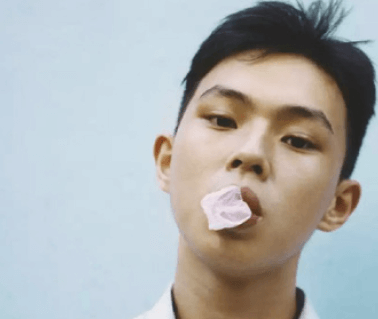
Born in 1985 in Hong Kong, she moved to the UK at the age of 11. Graduated at Chelsea College of Art, Leese focused on fashion photography, training at London College of Fashion. Alexandra Leese only recently decided to concentrate her works on her own identity and reshaping the female narrative as a woman herself. Leese’s subjects may seem soft and discreet, but they can quickly envelop the viewer. Alex’ first zine Boys of Hong Kong focuses on the new generation of male Hongkongers; by means of these photos, she aims to free firstly and foremost her subjects from the western stereotypes involving Asian men. … Read full text
2DPA-1
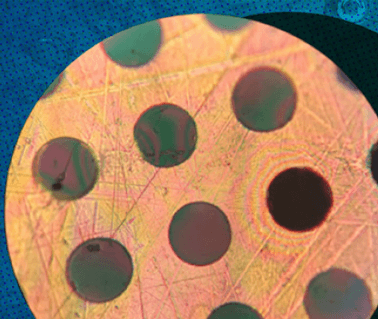
Massachusetts Institute of Technology (MIT) chemical engineers have invented a new type of plastic that is twice as strong as steel and could one day be used as a building material. Dubbed 2DPA-1, the material is light and mouldable like plastic but has a strength and resistance that the researchers behind the project liken to steel and bulletproof glass. The MIT engineers envision 2DPA-1 being used in the near future as a coating to enhance the durability of objects, and eventually as a structural material. “We don’t usually think of plastics as being something that you could use to support a building, but with this material, you can enable new things,” said MIT chemical engineering professor Michael Strano. … Read full text
Live a better life learning how to keep your body, mind and soul balanced. Visit regularly MyAIU Body / MyAIU Mind / MyAIU Spirit and MyAIU Energy.
Bladder health

Like many people I know, I always pee right before I leave the house. This has been a non-negotiable habit. … However, while the “just in case” pee seems like a smart strategy, it might actually be pretty bad for your bladder. At least, that’s according to a recent viral TikTok video from Bethany Henry Clark, PT, DPT. In the video, she says that making yourself pee when you don’t feel the immediate need to do so can, over time, actually make you have to pee more and more often. I got in touch with board-certified urologist Lamia Gabal, MD, to get her thoughts on “just in case” peeing. First off, a normal bladder capacity is about 10-15 ounces, Dr. Gabal says. … In general, it’s normal to pee six to eight times in a 24-hour period if you drink 64 ounces of fluid a day, but this depends on how much you drink. Dr. Gabal says that e the “just in case” pee strategy can be helpful for people with urinary incontinence issues, she says, because they will leak less. But for otherwise healthy adults, Dr. Gabal agrees with Clark that this practice can be potentially problematic. “It can send a message to your brain that this is a correct volume for your bladder to have the sensation of needing to urinate, almost training your bladder to have to void at smaller volumes,” she says. … Read full text:
Random acts of kindness
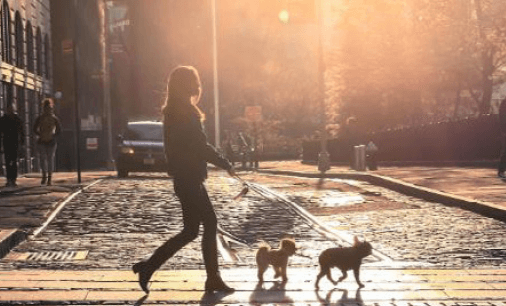
Spreading kindness not only helps others feel better about themselves —it can also boost the giver’s health and happiness, according to research. It’s a win-win for all. Here’s why. Putting the well-being of others before our own without expecting anything in return —being altruistic— stimulates the reward centers of the brain, studies show. Those feel-good chemicals flood our system, producing a sort of “helper’s high.” Volunteering, for example, has been shown to minimize stress and improve depression. The same activity can also reduce the risk for cognitive impairment and even help us live longer. Kindness contributes to our sense of community and belonging. And that is a key contributor to a healthy, longer life. Lower blood pressure. Prosocial spending (giving donations) has been shown to reduce blood pressure and improve heart health. Pain reduction. A recent study found that regions of the brain that react to painful stimulation appear to be instantly deactivated by the experience of giving. Happiness. In the UK, researchers found that being kind could boost happiness in as little as three days. Kindness suggestions. While driving, make room for the car that wants to enter your lane • Give a genuine compliment to a family member, friend or colleague, walk a neighbor’ dog as often … Read full text:
Find Open Courses and a world of learning granted by AIU at courses.aiu.edu Help others study and change their lives. Visit MyAIU Pledge.
US west ‘megadrought’
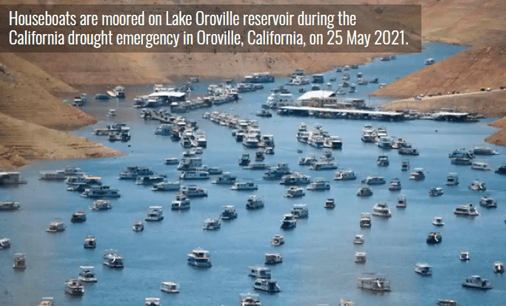
The American west has spent the last two decades in what scientists are now saying is the most extreme megadrought in at least 1,200 years. In a new study, researchers also noted that human-caused climate change is a significant driver of the destructive conditions and offered a grim prognosis: even drier decades lie ahead. “Anyone who has been paying attention knows that the west has been dry for most of the last couple decades,” says Park Williams, a climate scientist at the University of California, Los Angeles and the study’s lead author. “We now know from these studies that is dry not only from the context of recent memory but in the context of the last millennium.” Turning up the temperature —the result of human caused warming— has played a big part. Other studies show how the climate crisis “will increasingly enhance the odds of long, widespread and severe megadroughts”, the researchers write. Noting that as the west is now in the midst of the driest 22-year period in knowable history, “this worst-case scenario already appears to be coming to pass”. The research builds on conclusions from a previous study, also led by Williams, that ranked the period between 2000 and 2018 as the second driest in 12 centuries. The last two incredibly dry years —marked by record-setting heatwaves, receding reservoirs, and a rise in dangerously erratic blazes that burned both uncontrollably and …
Read full text:
Do you know where you’re at?

In 1981, Coevolution Quarterly published a 20 question quiz written by Charles, Dodge, Milliman, and Stockley that is designed to reveal how well you know your local natural environment. Here are the questions: 1. Trace the water you drink from precipitation to tap. 2. How many days til the moon is full? 3. What soil series are you standing on? 4. What was the total rainfall in your area last year? 5. When was the last time a fire burned in your area? 6. What were the primary subsistence techniques of the culture that lived in your area before you? 7. Name 5 edible plants in your region and their season(s) of availability. 8. From what direction do winter storms generally come in your region? 9. Where does your garbage go? 10. How long is the growing season where you live? 11. On what day of the year are the shadows the shortest where you live? 12. When do the deer rut in your region, and when are the young born? 13. Name five grasses in your area. Are any of them native? 14. Name five resident and five migratory birds in your area. 15. What is the land use history of where you live? 16. What primary ecological event/process influenced the land form where you live? 17. What species have become extinct in your area? 18. What are the major plant associations in your region? 19. From where you’re reading this, point north. 20. What spring wildflower is consistently among the first to bloom where you live? … Read full text:
Find support for your own unique art and design projects, or support other creative projects at MyAIU Research
Consent
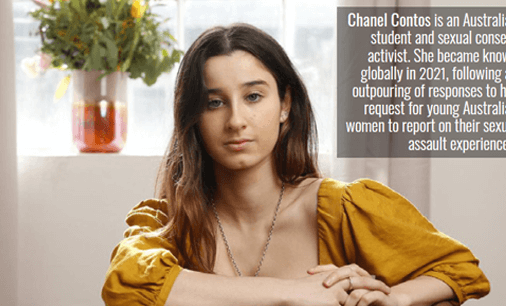
If ever there was cause for a cultural reckoning, the Hurt Locker of female student trauma compiled by Chanel Contos is it. It is Exhibit A in our collective failure to cultivate the social conditions conducive to the flourishing of healthy young human beings. The horror archive now contains more than 5,000 accounts of sexual assault, unwanted sex, and coercion shared by female students and former students in response to a question posed by the 23-year-old former Kambala student on Instagram. … Every day more girls come forward to add to the trauma tome, offering their testimony of being violated by teenage boys. Some of the girls are as young as thirteen or fourteen years of age. … Chanel Contos is now calling for better sexual consent education. I support her aims … But with every school workshop I run, I see that … Consent education won’t be effective if women are not first seen as human and worthy of dignity and respect. … I have sometimes heard it said that the boys didn’t know what they were doing. That they needed to be taught more about consent, or that, in the heat of the moment, they simply misunderstood the girl’s wishes. But surely we can all agree that if a boy rapes a girl while she is asleep, there was no attempt to gain consent. If a boy sexually assaults a girl while his friends film it and they then share the footage, there was no intention to gain consent. In both instances, sexual gratification triumphs over empathy. …
Read full text:
Animal liberation front

Find Open Courses and a world of learning granted by AIU at courses.aiu.edu Help others study and change their lives. Visit MyAIU Pledge.
Campus
Murdering the planet just to perpetuate a worldview

The following is an extract from Derrick Jensen’s 2016 book The Myth of Human Supremacy. Find the book here: https://derrickjensen.org/myth-of-human-supremacy/
You’ve probably noticed I haven’t talked about the origins of human supremacism. Some say it began with the domestication of nonhuman animals, as we came to think of these as our dependent inferiors, as our slaves, our beasts of burden. Some say it began with agriculture, where the entire landbase was converted to human use. Some say the model for human supremacism is male supremacism: women are physically differentiable from men, and some men decided that differentiability meant inferiority, and validated their own superiority by repeatedly violating and controlling women; this model was then applied across racial, cultural, and species differences. Some say human supremacism really got its start with the creation of a monotheistic sky god and the consequent removal of meaning from the material earth.
These questions of origins, while interesting and on some levels important, are not vital to the current discussion. Right now this narcissistic, sociopathic human supremacist culture is killing the planet, and we need to stop it. Asking where it started feels a bit to me like wondering about the childhood traumas of the axe murderer who is tearing apart your loved ones. Sure, it’s a discussion to be had, but can we please stop the murderer first? Because human supremacism —like other supremacisms— is not based on fact, but rather on pre-existing bigotry (and the narcissism and tangible self-interest on which all bigotries are based), I don’t expect this book will cause many human supremacists to reconsider their supremacism, just as books on male or white supremacism don’t generally cause male or white supremacists to reconsider theirs. The book isn’t written for them. This book is written to give support to the people —and there are a lot of us— who are not human supremacists, and who are disgusted with the attitudes and behaviors of the supremacists, who are attempting to stop the supremacists from killing all that lives. It is written for those who are appalled by nonhumans being tortured, displaced, destroyed, exterminated by supremacists in service to authoritarian technics. It is written for those who are tired of the incessant —I would say obsessive— propaganda required to prop up human supremacism. It is written for those who recognize the self-serving stupidity and selective blindness of the supremacist position. It is written for those who prefer a living planet to authoritarian technics. It is written for those who prefer democratic decision-making processes to authoritarian technics. It is written for those who prefer life to machines. … I’m sitting again by the pond. The wind still plays gently among the reeds, plays also with the surface of the water. This time I do not hear the sound of a family of jays softly talking amongst themselves. This time I hear the sound of chainsaws. The forests on both sides of where I live are being clearcut. I don’t know why. Or rather, on a superficial level I do. The people who “own” both pieces of land had a “problem” they needed to “solve.” “Problem”? They needed money. Or they wanted money. Or they craved money. It doesn’t matter. “Solution”? Cut the trees and sell them. Never mind those who live there. So for weeks now I’ve been hearing the whine of chainsaws and the screams of trees as they fall. For weeks now I’ve been feeling the shock waves when the trees hit the ground. Such is life at the end of the world. … We end on the plains of eastern Colorado, where as I write this a friend is trying desperately to protect prairie dogs. A “developer” wants to put in a mall on top of one of the largest extant prairie dog villages along Colorado’s Front Range. The village has 3,000 to 8,000 burrows.
Prior to this human supremacist culture moving into the Great Plains, the largest prairie dog community in the world, which was in Texas, covered 25,000 square miles, and was home to perhaps 400 million prairie dogs. The total range for prairie dogs was about 150,000 to 200,000 square miles, and population was well over a billion. Now, prairie dogs have been reduced to about five percent of their range and two percent of their population. Yet because yet another rich person wants to build yet another mall (in this economy, with so many empty stores already?), much of this prairie dog community will be poisoned. That community includes the twenty or more other species who live with and depend upon prairie dogs. The prairie dogs (and some others) who are not poisoned will be buried alive by the bulldozers, then covered with concrete. This includes the pregnant females, who prefer not to leave their dens.
If you recall, prairie dogs have complex languages, with words for many threats. They have language to describe hawks, and to describe snakes, and to describe coyotes. They have language to describe a woman wearing a yellow shirt, and different language for a woman wearing a blue shirt. They have had to come up with language to describe a man with a gun. Do they, I wonder, have language to describe a bulldozer? Do they have language to describe the pregnant females of their community being buried alive? And do they have language to describe the murderous insatiability of human supremacists? And do others? Do blue whales and the few remaining tigers? Do the last three northern white rhinos, all that’s left because some human supremacists believe their horns are aphrodisiacs? Do elephants? Did the black-skinned pink-tusked elephants of China? Did the Mesopotamian elephants? And what about others? What about the disappearing fireflies? What about the dammed and re-dammed and re-dammed Mississippi? What about the once-mighty Columbia? What about the once-free Amazon? Do they have language to describe this murderous insatiability? … And perhaps more to the point, do we? …
By the time you read this, the prairie dogs my friend is fighting to protect will probably be dead, killed so someone can build yet another cathedral to human supremacism. And by the time you read this, yet another dam will have been built on the Mekong, on the upper reaches of the Amazon, on the upper Nile. By the time you read this there will be 7,000 to 10,000 more dams in the world. By the time you read this there will be more dead zones in the oceans. By the time you read this there will be another 100,000 species driven extinct. And all for what? To serve authoritarian technics, to serve an obsession to validate and re-validate a self-perceived superiority that is so fragile that each new other we encounter must be violated, and then violated, and then violated, till there is nothing left and we move on to violate another. This is not the future I want. This is not the future I will accept. … What I want from this book is for readers to begin to remember what it is to be human, to begin to remember what it is to be a member of a larger biotic community.
What I want is for you —and me, and all of us— to fall back into the world into which you —and me, and all of us— were born, before you, too, like all of us were taught to become a bigot, before you, too, like all of us were taught to become a human supremacist, before you, too, like all of us were turned into a servant of this machine culture like your and my parents and their parents before them. I want for you —and me, and all of us— to fall into a world where you —like all of us— are one among many, a world of speaking subjects, a world of infinite complexity, a world where we each depend on the others, all of us understanding that the health of the real world is primary.
The world is being murdered. It is being murdered by actions that are perpetrated to support and perpetuate a worldview. Those actions must be stopped. Given what is at stake, failure is no longer an option. The truth is that it never was an option. So where do we begin? We begin by questioning the unquestioned beliefs that are the real authorities of this culture, and then we move out from there. And once you’ve begun that questioning, my job is done, because once those questions start they never stop. From that point on, what you do is up to you. Read full text: https://www.counterpunch.org/2021/12/24/theres-only-one-essential-role-humans-have-on-earth-a-humbler-perspectivecould-save-the-world/
Help others study and change their lives. Visit MyAIU Pledge. Learn how to have a better financial control. Visit MyAIU Money.
Teacup and coaster.

Handmade, in a lovely watercolor inspired design. www.theapollobox.com
Nothing ear(1).
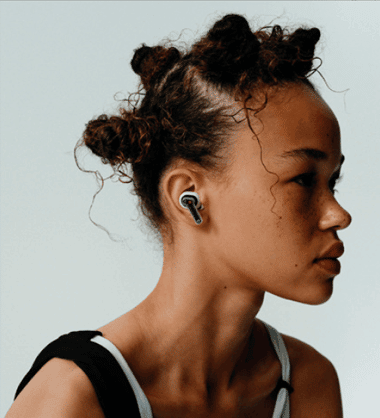
Bluetooth Earbuds —with sound developed by Teenage Engineering— boast a powerful 11.6mm speaker driver, Active Noise Cancellation, touch-control gestures and up to 34 hours of listening per charge. The ultra-lightweight design features transparent veneers to highlight the craftsmanship underneath. The earbuds can be wirelessly charged on the go with the case, which can be charged via USB-C cable (included).
Adam Grant (1981–)
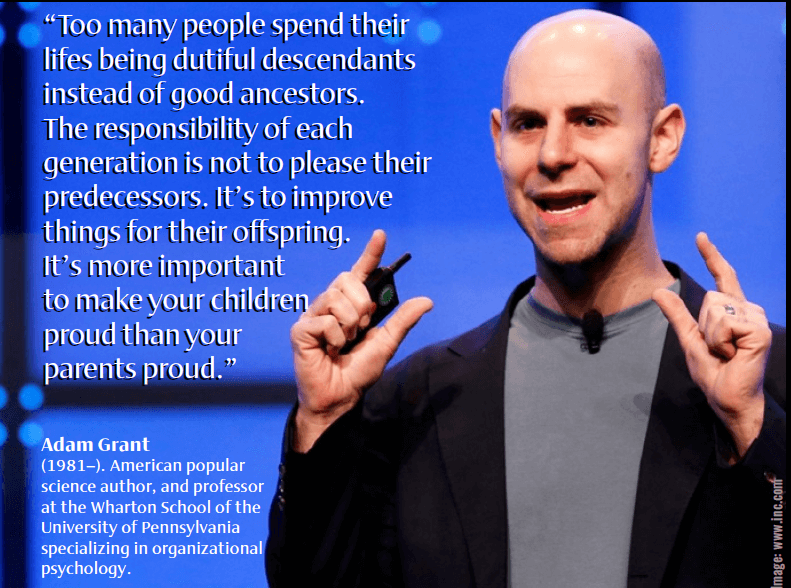
“Too many people spend their lifes being dutiful descendants instead of good ancestors. The responsibility of each generation is not to please their predecessors. It’s to improve things for their offspring. It’s more important to make your children proud than your parents proud.” Adam Grant (1981–).
American popular science author, and professor at the Wharton School of the University of Pennsylvania specializing in organizational psychology.
Cedar board kalimba.

Swan style finger splint I customized for a friend who has arthritis loses finger splints which are a pain to replace. I took the designs uploaded from @orange_pla_ftw and printed them, but they were too short in length, and when lengthened they didn’t fit the target fingers comfortably. A slight taper was added and they fit well. I used tinkercad to do my tinkering. Sharing in case people find them useful. I am printing using an Anycubic Photon Mono, and the best fit I have found is at ~110% of this model size. Printed using rafts and supports, and a quick sand with 400 grit wet and dry sandpaper. Given how little resin is used printing these, I would suggest printing a range of sizes and doing test fits. … Note: Thingiverse is a website dedicated to the sharing of usercreated digital design files. Providing primarily free, open-source hardware designs licensed under the GNU General Public License or Creative Commons licenses, the site allows contributors to select a user license type for the designs that they share. Read full text:
Brain hat.
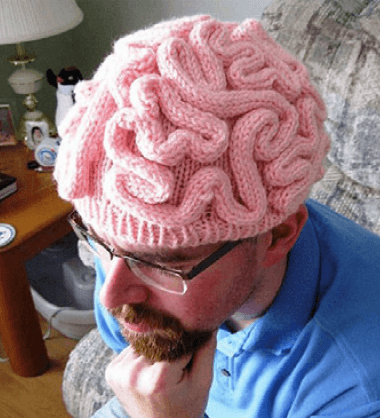
A simple way to express yourself. Knitted in cotton with 8 color options. www.theapollobox.com
Good Advice
21. WHEN YOU QUIT, YOU FAIL.
The surest way to lose at any endeavor is to quit. But fatigue, discomfort, and discouragement are merely symptoms of effort.
Bachelor's of Adult Education
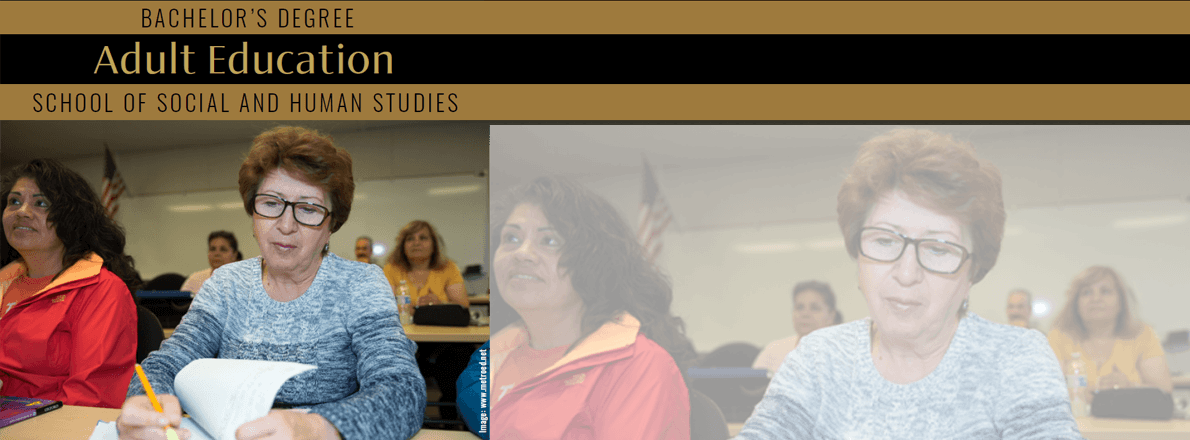
The Bachelor of Adult Education (BA) program objective is to provide students with technical training necessary to work in the broad field of adult education; including community development, training coordination, mentorship, staff development, corporate and career training. Courses focus on training fundamentals, educational psychology, and adult learning behavior. The Bachelor of Adult Education (BA) program is offered online via distance learning. After evaluating both academic record and life experience, AIU staff working in conjunction with Faculty and Academic Advisors will assist students in setting up a custom-made program, designed on an individual basis. This flexibility to meet student needs is seldom found in other distance learning programs. Our online program does not require all students to take the same subjects/courses, use the same books, or learning materials. Instead, the online Bachelor of Adult Education (BA) curriculum is designed individually by the student and academic advisor. It specifically addresses strengths and weaknesses with respect to market opportunities in the student’s major and intended field of work. Understanding that industry and geographic factors should influence the content of the curriculum instead of a standardized one-fits-all design is the hallmark of AIU’s unique approach to adult education. This philosophy addresses the dynamic and constantly changing environment of working professionals by helping adult students in reaching their professional and personal goals within the scope of the degree program.
Below is an example of the topics or areas you may develop and work on during your studies. By no means is it a complete or required list as AIU programs do not follow a standardized curriculum. It is meant solely as a reference point and example. Want to learn more about the curriculum design at AIU? Go ahead and visit our website, especially the Course and Curriculum section: https://wp24.aiu.edu/CourseCurriculum.html
Communication & Investigation (Comprehensive Resume)
Organization Theory (Portfolio)
Experiential Learning (Autobiography)
Seminar Administrative Development (Book Summary)
Seminar Cultural Development (Practical Experience)
Seminar International Development (Publications)
Interpersonal communication
Theory and motivation
Adult education methods and procedures
Adult education assessment strategies
Effective verbal presentations
Fundamentals of training
Educational psychology
Adult learning
Training perspectives
Adult learning and development
Introduction to sociology
Cultural anthropology
Human behavior and development credits
Organizational communication
Business mathematics
Principles of Psychology
aiu.edu/apply-online.html
Pioneer Plaza/900 Fort Street Mall 410
Honolulu, HI 96813
800-993-0066 (Toll Free in US)
808-924-9567 (Internationally)
Bachelor Thesis Project
MBM300 Thesis Proposal
MBM302 Bachelor Thesis (5,000 words)
About Us

Accreditation
Atlantic International University offers distance learning degree programs for adult learners at bachelors, masters, and doctoral level. With self paced program taken online, AIU lifts the obstacles that keep professional adults from completing their educational goals. Programs are available throughout a wide range of majors and areas of study. All of this with a philosophically holistic approach towards education fitting within the balance of your life and acknowledging the key role each individual can play in their community, country, and the world.
Atlantic International University is accredited by the Accreditation Service for International Schools, Colleges and Universities (ASIC). ASIC Accreditation is an internationally renowned quality standard for colleges and universities. Visit ASIC’s Directory of Accredited Colleges and Universities. ASIC is a member of CHEA International Quality Group (CIQG) in the USA, an approved accreditation body by the Ministerial Department of the Home Office in the UK, and is listed in the International Directory of the Council for Higher Education Accreditation (CHEA). The University is based in the United States and was established by corporate charter in 1998.
Our founding principles are based on the United Nations Universal Declaration of Human Rights; per article 26, AIU believes that Higher Education is a Human Right. The University has implemented a paradigm shifting educational model for its academic programs that have allowed it to move closer to this goal through the self-empowerment of its students, decentralization of the learning process, personalized open curriculum design, a sustainable learning model, developing 11 core elements of the Human Condition within MYAIU, and utilizing the quasi-infinite knowledge through the use of information technology combined with our own capacity to find solutions to all types of global issues, dynamic problems, and those of individuals and multidisciplinary teams. Due to these differentiations and the university’s mission, only a reputable accrediting agency with the vision and plasticity to integrate and adapt its processes around AIU’s proven and successful innovative programs could be selected. Unfortunately, the vast majority of accrediting agencies adhere to and follow obsolete processes and requirements that have outlived their usefulness and are in direct conflict with the university’s mission of offering a unique, dynamic, affordable, quality higher education to the nontraditional student (one who must work, study what he really needs for professional advancement, attend family issues, etc.). We believe that adopting outdated requirements and processes would impose increased financial burdens on students while severely limiting their opportunities to earn their degree and advance in all aspects. Thus, in selecting the ASIC as its accrediting agency, AIU ensured that its unique programs would not be transformed into a copy or clone of those offered by the 10,000+ colleges and universities around the world. Since ASIC is an international accrediting agency based outside the United States, we are required by statute HRS446E to place the following disclaimer: ATLANTIC INTERNATIONAL UNIVERSITY IS NOT ACCREDITED BY AN ACCREDITING AGENCY RECOGNIZED BY THE UNITED STATES SECRETARY OF EDUCATION. Note: In the United States and abroad, many licensing authorities require accredited degrees as the basis for eligibility for licensing.

In some cases, accredited colleges may not accept for transfer courses and degrees completed at unaccredited colleges, and some employers may require an accredited degree as a basis for eligibility for employment. Potential students should consider how the above may affect their interests, AIU respects the unique rules and regulations of each country and does not seek to influence the respective authorities. In the event that a prospective student wishes to carry out any government review or process in regards to his university degree, we recommend that the requirements of such are explored in detail with the relevant authorities by the prospective student as the university does not intervene in such processes. AIU students can be found in over 180 countries, they actively participate and volunteer in their communities as part of their academic program and have allocated thousands of service hours to diverse causes and initiatives. AIU programs follow the standards commonly used by colleges and universities in the United States with regards to the following: academic program structure, degree issued, transcript, and other graduation documents. AIU graduation documents can include an apostille and authentication from the US Department of State to facilitate their use internationally.
The AIU Difference
It is acknowledged that the act of learning is endogenous, (from within), rather than exogenous.
This fact is the underlying rationale for “Distance Learning”, in all of the programs offered by AIU. The combination of the underlying principles of student “self instruction”, (with guidance), collaborative development of curriculum unique to each student, and flexibility of time and place of study, provides the ideal learning environment to satisfy individual needs.
AIU is an institution of experiential learning and nontraditional education at a distance. There are no classrooms and attendance is not required.
The AIU Difference
MISSION:
To be a higher learning institution concerned about generating cultural development alternatives likely to be sustained in order to lead to a more efficient administration of the world village and its environment; exerting human and community rights through diversity with the ultimate goal of the satisfaction and evolution of the world.
VISION :
The empowerment of the individual towards the convergence of the world through a sustainable educational design based on andragogy and omniology.
Organizational Structure
Dr. Franklin Valcin
President/Academic Dean
Dr. Ricardo Gonzalez
Chief Operation Officer
and MKT Director
Dr. Miriam Garibaldi
Viceprovost for Research
Dr. Ofelia Miller
Director of AIU
Juan Pablo Moreno
Director of Operations
Paula Viera
Director of
Intelligence Systems
Felipe Gomez
Design Director / IT Supervisor
Daritza Ysla
IT Coordinator
Nadeem Awan
Chief Programming Officer
Dr. Jack Rosenzweig
Dean of Academic Affairs
Dr. Edward Lambert
Academic Director
Dr. Ariadna Romero
Advisor Coordinator
Nadia Gabaldon
Academic Coordinator
Jhanzaib Awan
Senior Programmer
Leonardo Salas
Human Resource Manager
Benjamin Joseph
IT and Technology Support
Rosie Perez
Finance Coordinator
Chris Soto
Admissions Counselor
Dr. José Mercado
Chief Executive Officer
Chairman of the Board of Trustees
Linda Collazo
Logistics Coordinator
Irina Ivashuk
Alumni Association
Coordinator
Clara Margalef
Director of Special Projects
of AIU
David Jung
Corporate/Legal Counsel
Bruce Kim
Advisor/Consultant
Thomas Kim
Corporate/
Accounting Counsel
Camila Correa
Quality Assurance Coordinator
Maricela Esparza
Administrative Coordinator
Chris Benjamin
IT and Hosting Support
Mayra Bolivar
Accounting Coordinator
Roberto Aldrett
Communications Coordinator
Giovanni Castillo
IT Support
Jaime Rotlewicz
Dean of Admissions
Dr. Mario Rios
Academic Advisor
Michael Phillips
Registrar’s Office
Rene Cordon
Admissions Support
Jenis Garcia
Admissions Counselor
Ricardo González, PhD
Provost
Dr. Silvia Restorff
Academic Advisor
Dr. Prakash Menon
Academic Advisor
Carlos Aponte
Telecommunications
Coordinator
Dr. Nilani Ljunggren De Silva
Academic Advisor
Dr. Scott Wilson
Academic Advisor
Dr. Mohammad Shaidul Islam
Academic Advisor
Dr. Edgar Colon
Academic Advisor
Deborah Rodriguez
Academic Tutor Coordinator
Cyndy Dominguez
Academic Tutor Coordinator
Kinmberly Diaz
Admissions Support Tutor
Amalia Aldrett
Admissions Coordinator
Sandra Garcia
Admissions Coordinator
Jose Neuhaus
Admissions Support
Junko Shimizu
Admissions Coordinator
Veronica Amuz
Admissions Coordinator
Alba Ochoa
Admissions Coordinator
Contact Us
Atlantic International University
900 Fort Street Mall 905 Honolulu, HI 96813
Quick Links
Home | Spanish | Online Courses | Available Courses | Vrtual Campus | Career Center | Available Positions | Ask Career Coach | The Job Interview | Resume Writing | Accreditation | Areas of Study | Bachelor Degree Programs | Masters Degree Programs | Doctoral Degree Programs | Course & Curriculum | Human Rights | Online Library | Representations | Student Publication | Sponsors | General Information | Mission & Vision | School of Business and Economics | School of Science and Engineering | School of Social an Human Studies | Media Center | Admission Requirements | Apply Online | Tuition | Faculty & Staff | Distance Learning Overview | Student Testimonials | Frequently Asked Questions | Register for Program | Privacy Policy | FAQ







